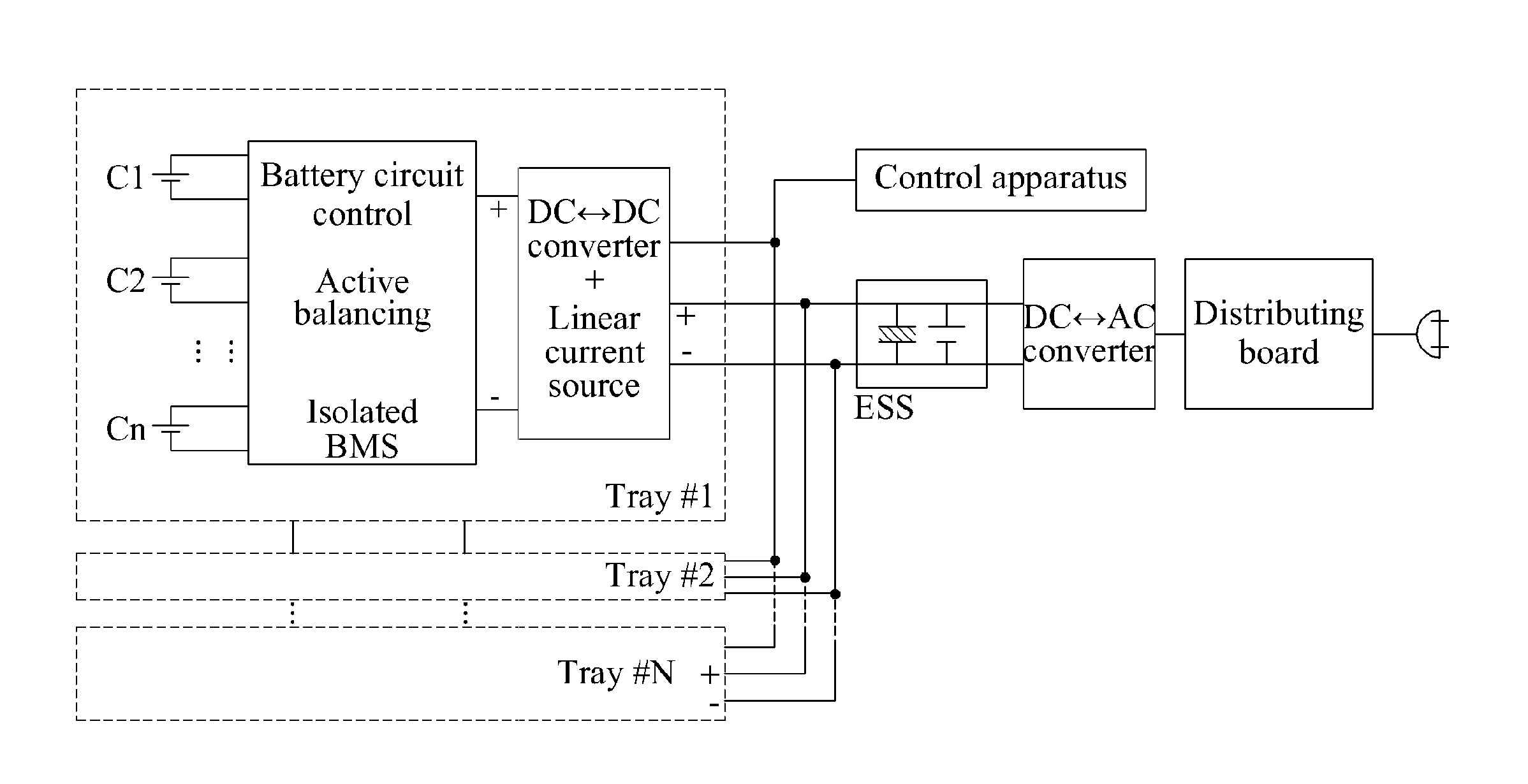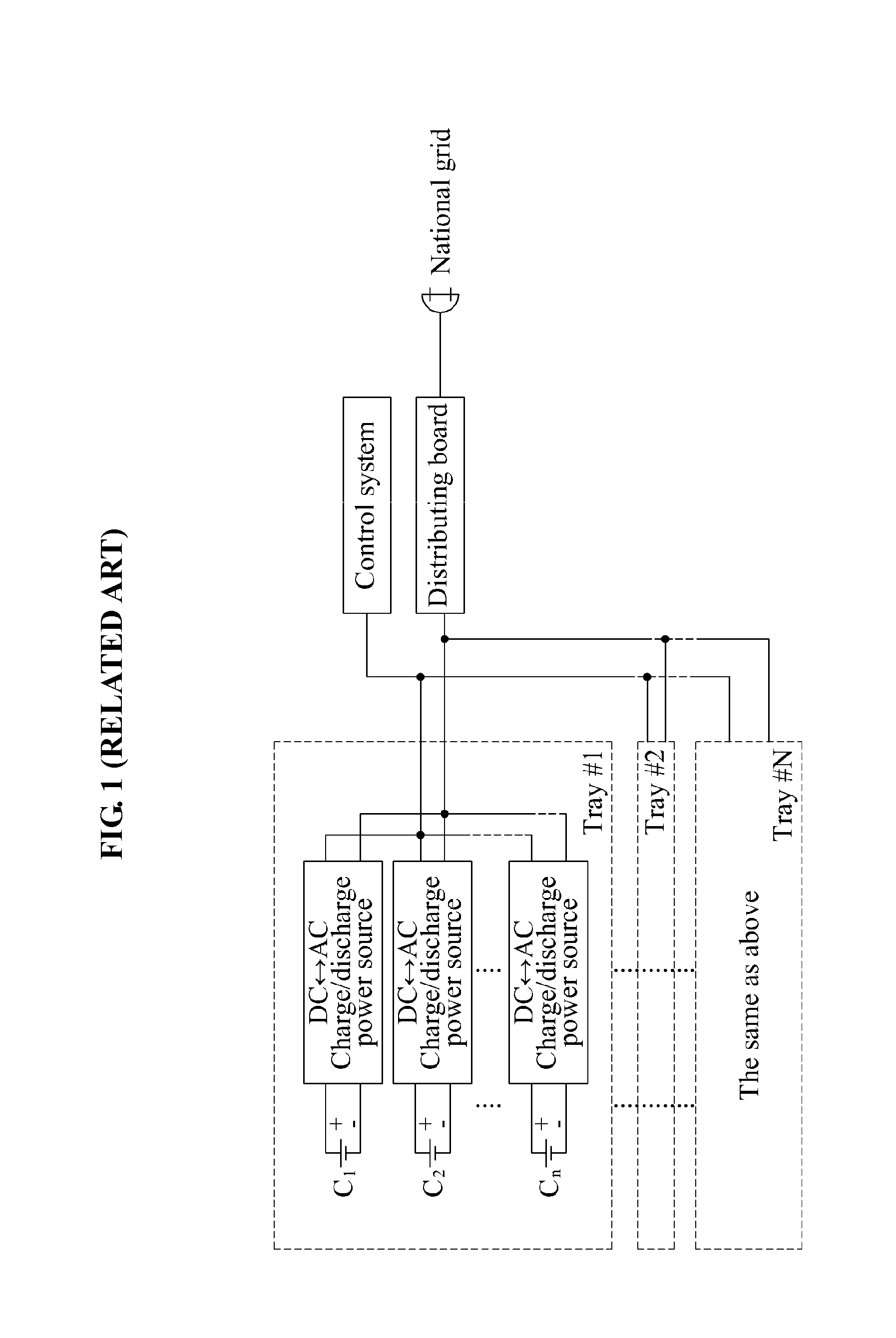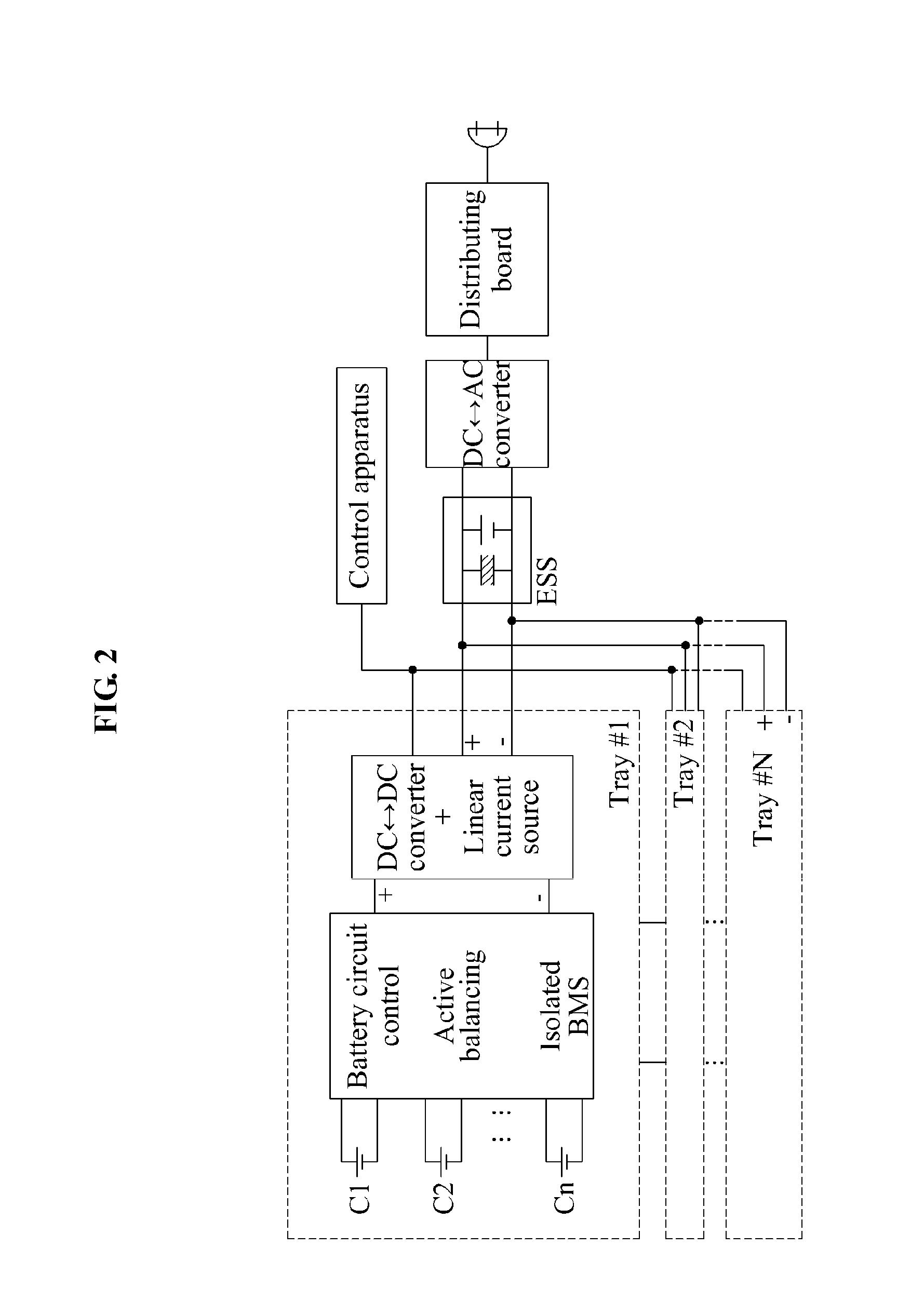Direct current (DC) microgrid charge/discharge system for secondary batteries connected in series
- Summary
- Abstract
- Description
- Claims
- Application Information
AI Technical Summary
Benefits of technology
Problems solved by technology
Method used
Image
Examples
embodiments
[0036]Embodiments of the present invention will be further described with reference to the drawings. FIG. 1 illustrates a charge / discharge system according to a related art. FIG. 2 illustrates a DC microgrid charge / discharge system according to an embodiment of the present invention.
[0037]The DC microgrid charge / discharge system of FIG. 2 may refer to a single charge / discharge power supply with a large capacity. The charge / discharge system of FIG. 1 may require the same number of bidirectional DC-AC charge / discharge power sources as the number of batteries.
[0038]Accordingly, compared to the charge / discharge system of FIG. 1, manufacturing costs of the DC microgrid charge / discharge system of FIG. 2 may be reduced, and the DC microgrid charge / discharge system of FIG. 2 may have a significantly low weight and an extremely small size, and may also occupy an extremely small space during installation.
[0039]In the present disclosure, the terms “charging and discharging” and “charge / dischar...
PUM
 Login to View More
Login to View More Abstract
Description
Claims
Application Information
 Login to View More
Login to View More - R&D
- Intellectual Property
- Life Sciences
- Materials
- Tech Scout
- Unparalleled Data Quality
- Higher Quality Content
- 60% Fewer Hallucinations
Browse by: Latest US Patents, China's latest patents, Technical Efficacy Thesaurus, Application Domain, Technology Topic, Popular Technical Reports.
© 2025 PatSnap. All rights reserved.Legal|Privacy policy|Modern Slavery Act Transparency Statement|Sitemap|About US| Contact US: help@patsnap.com



